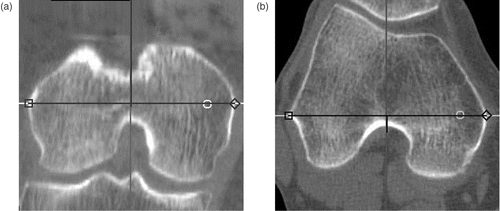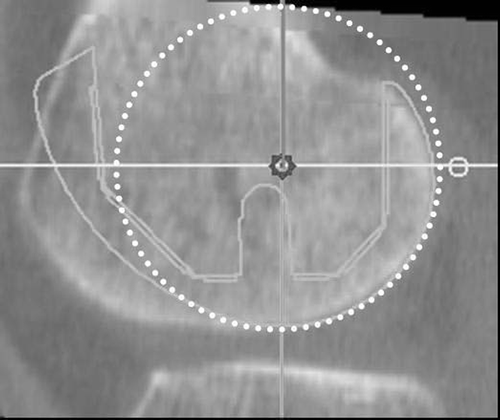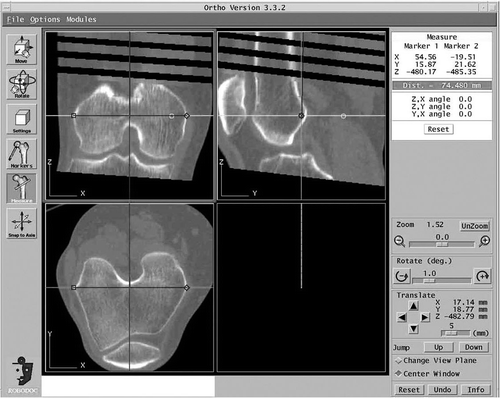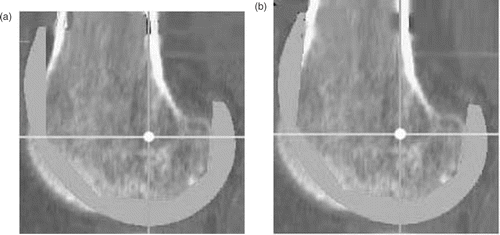Figures & data
Figure 2. The transepicondylar axis was determined by connecting the most prominent points of both the medial and lateral epicondyles in both the coronal plane (a) and the axial plane (b).

Figure 3. Virtual implantation of the femoral component. The implant size was selected according to the radius (shown as a circle) that was closest to the distance between the TEA (the center of the two orthogonal axes in this view) and the distal condyle border in the lateral condyle.



